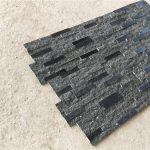Introduction
A fireplace has long been a central feature of the home, providing warmth, comfort, and a cozy ambiance. In recent years, the use of cultured stone for fireplace surrounds and mantels has gained popularity due to its durability, versatility, and aesthetic appeal. Cultured stone offers a cost-effective alternative to natural stone while still providing the same timeless look and feel. In this article, we will explore the benefits and versatility of cultured stone fireplaces, as well as provide tips on how to incorporate this stunning feature into your home.
History of Cultured Stone
Cultured stone, also known as manufactured stone or faux stone, has been used in construction for centuries. The concept of replicating natural stone dates back to ancient times when artisans would create stone-like materials using a combination of natural materials and pigments. In the modern era, cultured stone was developed as a more affordable and lightweight alternative to natural stone for use in various architectural applications, including fireplace surrounds.
Benefits of Cultured Stone Fireplaces
There are many benefits to choosing cultured stone for your fireplace, including:
1. Affordability: Cultured stone is typically more affordable than natural stone, making it a cost-effective option for homeowners looking to enhance their fireplace without breaking the bank.
2. Variety of Styles: Cultured stone is available in a wide range of colors, textures, and shapes, allowing homeowners to customize their fireplace to suit their unique style and preferences.
3. Durability: Cultured stone is made from high-quality materials that are designed to withstand the test of time, making it a durable and long-lasting choice for fireplace surrounds.
4. Lightweight: Compared to natural stone, cultured stone is lightweight, making it easier to install and reducing the structural load on your home.
5. Low Maintenance: Cultured stone is easy to clean and maintain, requiring minimal upkeep to keep your fireplace looking its best.
Design Options for Cultured Stone Fireplaces
One of the key advantages of cultured stone fireplaces is the wide range of design options available. Whether https://www.fs-slate.com prefer a traditional, rustic look or a more modern and sleek design, there is a cultured stone option to suit your style. Some popular design options for cultured stone fireplaces include:
1. Rustic Charm: Choose a textured, rough-hewn cultured stone to create a cozy, rustic fireplace that evokes the feeling of a traditional log cabin.

2. Contemporary Elegance: Opt for a sleek, polished cultured stone in a neutral color palette to achieve a modern and sophisticated look for your fireplace.
3. Mediterranean-Inspired: Select a warm-toned, weathered cultured stone with subtle variations in color to create a Mediterranean-inspired fireplace that adds a touch of old-world charm to your home.
4. Industrial Chic: Embrace the industrial trend by choosing a dark-colored, rugged cultured stone with a distressed finish for a fireplace that exudes urban sophistication.
Installation and Maintenance Tips
Installing a cultured stone fireplace requires careful planning and attention to detail to ensure a successful outcome. Here are some tips to help you with the installation and maintenance of your cultured stone fireplace:
1. Hire a Professional: While some homeowners may be comfortable taking on a DIY project, it is recommended to hire a professional mason or contractor with experience working with cultured stone to ensure a professional and durable installation.
2. Proper Preparation: Before installing the cultured stone, ensure that the fireplace surface is clean, dry, and free of any debris or loose materials that could affect the adhesion of the stone.
3. Use the Right Adhesive: Select a high-quality adhesive specifically designed for cultured stone to ensure a secure and long-lasting bond between the stone and the fireplace surface.
4. Sealant Application: Once the cultured stone has been installed, apply a sealant to protect the stone from water damage, staining, and other potential hazards.
5. Routine Maintenance: To keep your cultured stone fireplace looking its best, regularly clean the surface with a mild detergent and water, avoiding harsh chemicals or abrasive cleaners that could damage the stone.
Conclusion
A cultured stone fireplace is a beautiful and versatile addition to any home, offering a cost-effective way to enhance the aesthetic appeal and functionality of your living space. With a wide range of design options available, homeowners can customize their cultured stone fireplace to reflect their personal style and preferences. By following proper installation and maintenance guidelines, you can enjoy the timeless beauty and durability of a cultured stone fireplace for years to come.
